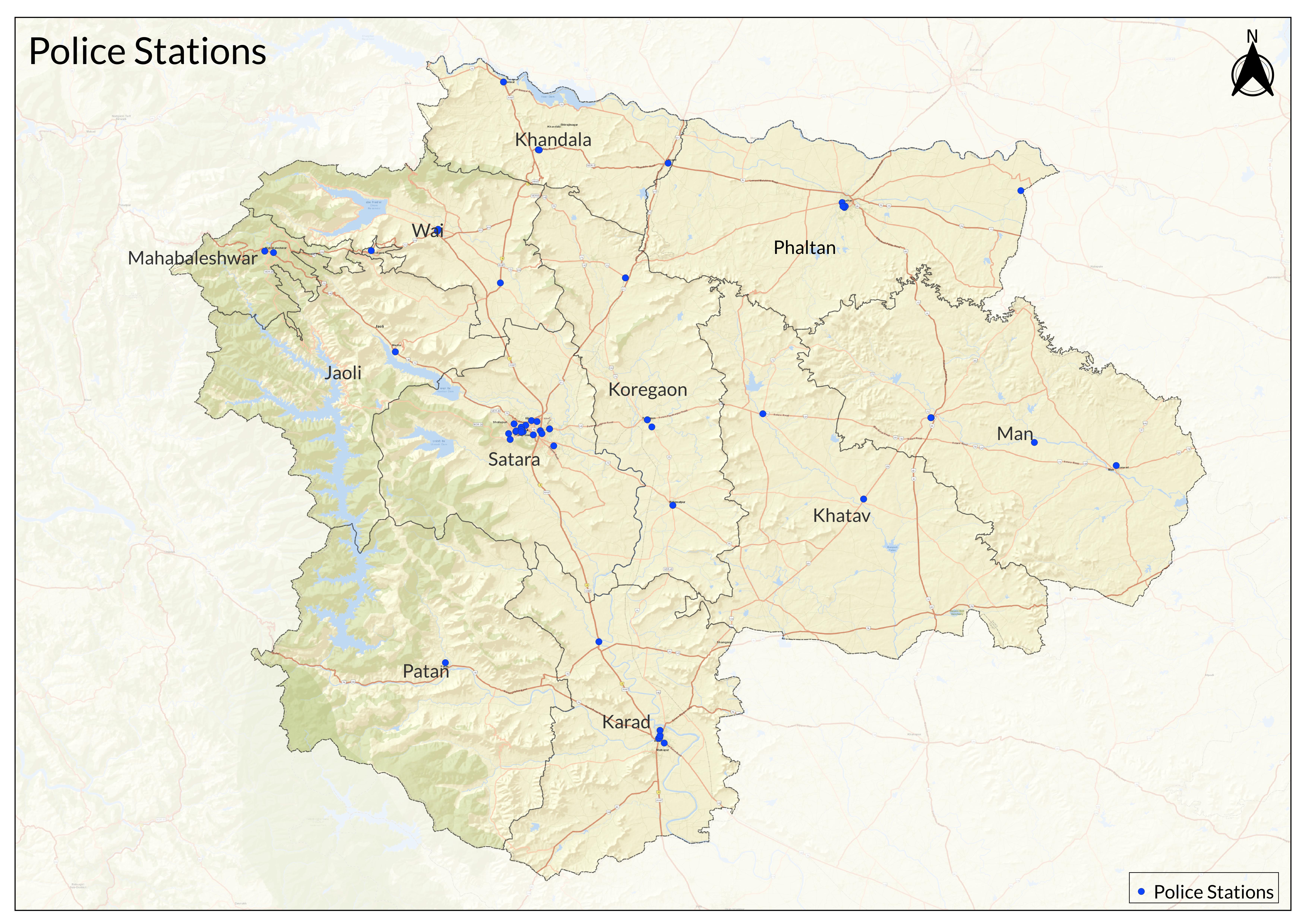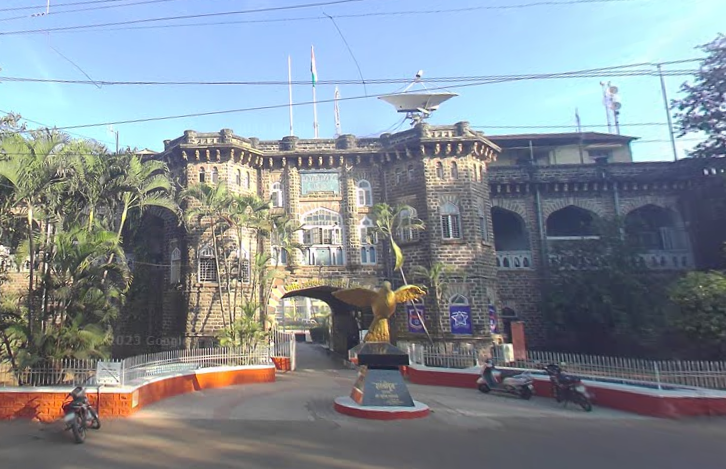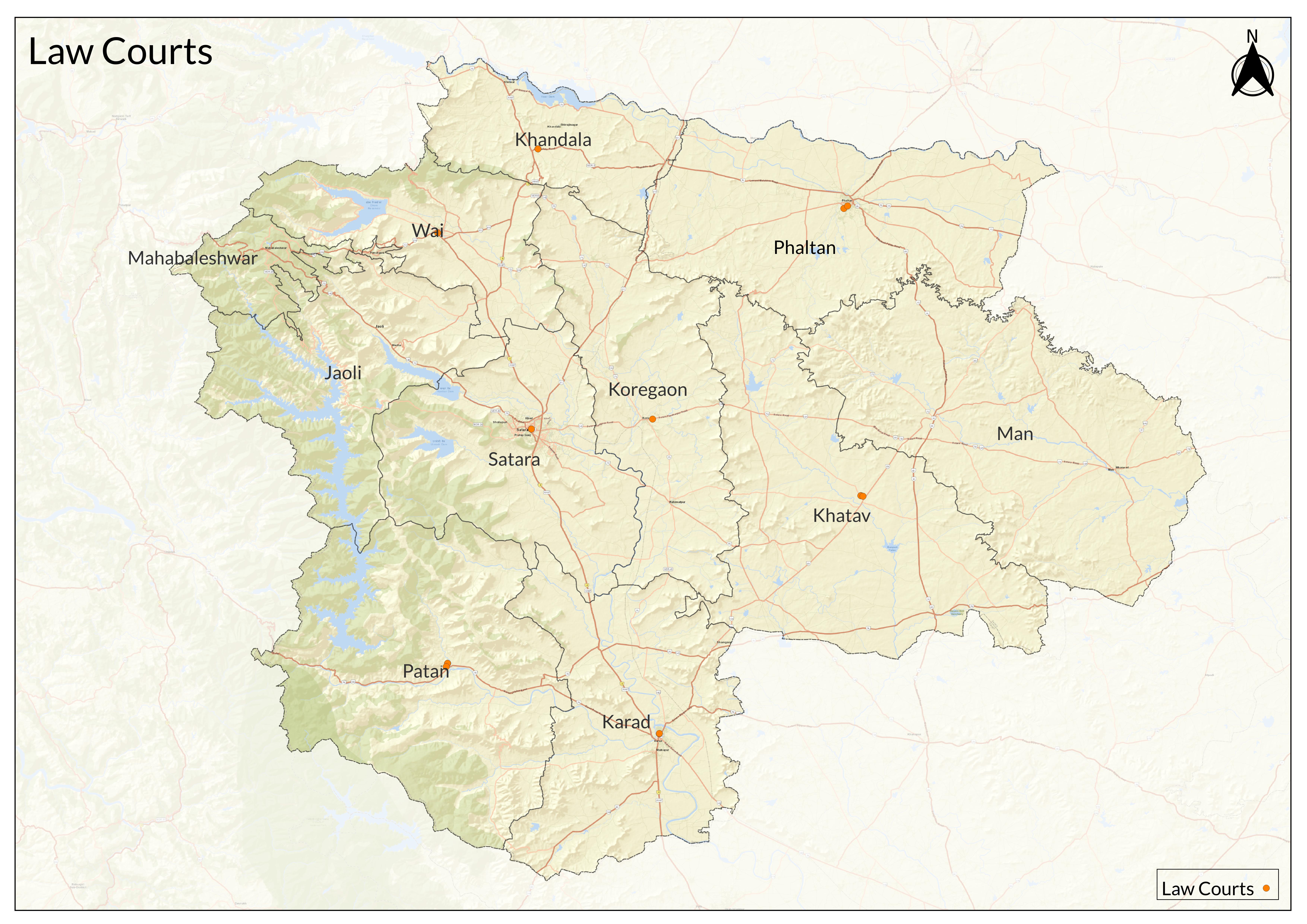Contents
- Community Perception of Safety
- Graphs
- Criminal Cases
- A. Cognizable Crimes under the Indian Penal Code (IPC)
- B. Select Offenses affecting the Human Body
- C. Select Offenses against Property
- D. Select Offenses against Public Tranquility
- E. Select Offenses relating to Documents and Property Marks
- F. Select Miscellaneous Crimes under the IPC
- G. Cognizable Crimes under Special and Local Laws (SLL)
- H. Select Offenses under Special and Local Laws (SLL)
- I. Crimes against Women
- J. Select Cases of Crimes against Women
- K. Cyber Crime
- L. Select Cases of Cyber Crime
- M. Cases of Fraud
- N. Reported Crimes against Women and Children
- Police Infrastructure and Workforce
- A. Police Infrastructure
- B. Police Officers and Employees
- Judicial System
- A. Number of Functioning Courts
- B. Judge Positions
- C. Cases Resolved
- D. Number of Original Cases Resolved
- E. Number of Appeal Cases Resolved
SATARA
Police & Judiciary
Last updated on 5 November 2025. Help us improve the information on this page by clicking on suggest edits or writing to us.
The major police stations in Satara district include Satara City, Satara Taluka, Karad City, Karad Rural, Wai, Mahabaleshwar, Panchgani, Phaltan, Koregaon, Khandala, Lonand, Vaduj, Mhaswad, and Patan, among others. These police stations cater to diverse areas, from urban centers to rural villages, ensuring effective law enforcement and crime prevention.

In Satara, police officers are commonly addressed with colloquial terms reflecting local culture and familiarity. Traffic police are often called "Mama," while schoolchildren and young adults tend to use "Kaka." Interestingly, there is a humorous local slang where the police station is referred to as "Saasurwadi" (in-laws’ village).
College students in Satara city have their informal way of referring to the police, often calling them the “Department.” Phrases like “Department aahe corner la” (The police are at the corner) are frequently used among students. When a police van is on patrol, it is referred to as “PCR,” and if students are caught skipping classes, a warning like “PCR yetay” (The police are coming.) prompts them to disperse quickly.
Elderly residents and shopkeepers typically address police officers as "saheb," demonstrating formal respect. While playful slang is used in casual conversations, the police force is widely acknowledged for its role in maintaining law and order throughout the district.

Community Perception of Safety
The community in Satara district generally perceives the area as a safe place, particularly for women and children, both during the day and night. The sense of security, however, varies based on location, living conditions, and individual experiences.
Satara city is considered a relatively peaceful urban center, with the busiest areas being Rajpath and its surroundings, while other parts remain predominantly residential. Most shops in the city close around 9 PM, while in nearby villages, business activity winds down by 8:30 PM. After these hours, traffic reduces significantly, but people continue to feel secure when traveling at night due to regular police patrolling.
According to locals, one factor contributing to this perception of safety is Satara’s reputation as a retirement-friendly town. A significant portion of the population consists of individuals aged 50 and above, as younger residents often migrate to Pune for employment opportunities and return on weekends. This demographic trend fosters a quieter and more secure environment in the district.
While Satara is generally seen as safe, concerns about crime do exist in certain pockets, especially along highways and in isolated rural areas. The district police actively work to address safety issues, ensuring regular patrolling and maintaining law and order across both urban and rural areas.
Graphs
Criminal Cases
Police Infrastructure and Workforce
Judicial System

Last updated on 5 November 2025. Help us improve the information on this page by clicking on suggest edits or writing to us.